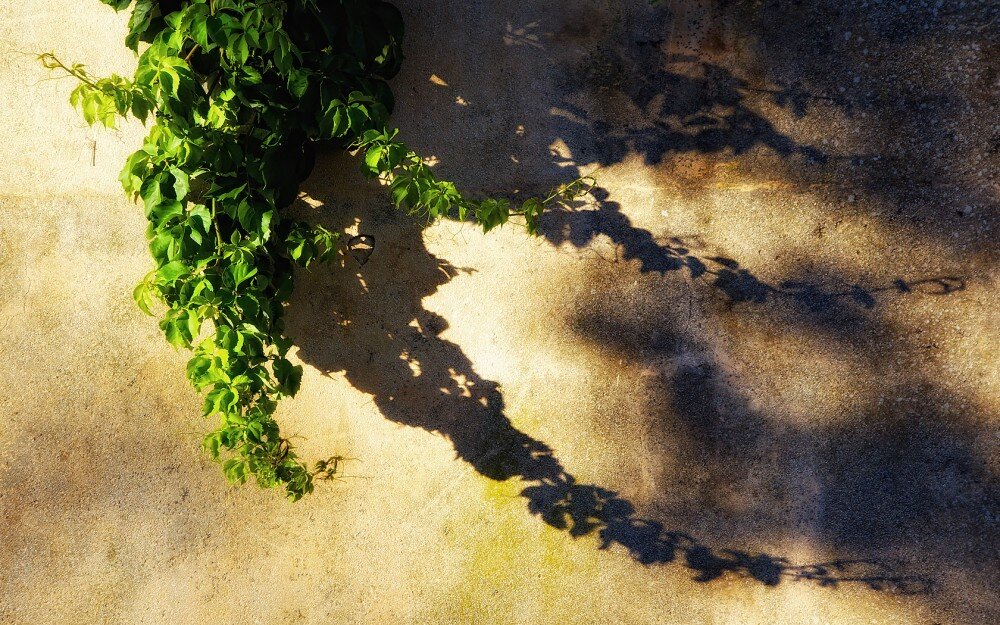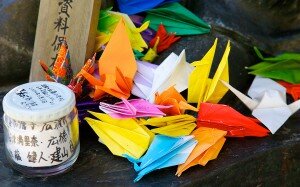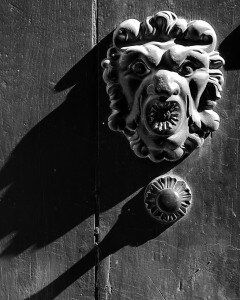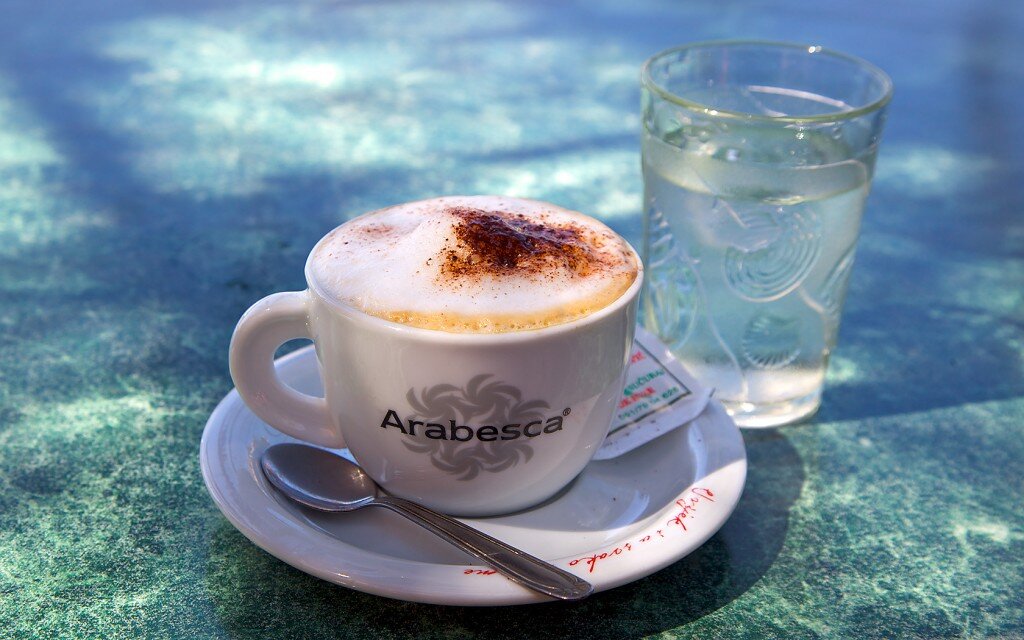 After two weeks of travel to London and various places in Portugal, I thought I'd return to my photo blog with the last photo on the memory card in my camera. It happens to be a photo of me taken by Deb in the Amsterdam airport. My smile is not due the joy I am feeling because, after two weeks of fresh-cooked food served deliberately in small restaurants, I can once again enjoy overpriced, homogenized cheeseburgers and an M&M McFlurry (which I'll admit was very good).My smile is more about having the opportunity to pose with Ronald MacDonald's arm around me. It's as if Ronald, a US export, were saying, "Welcome back to 'civilization.'" Though we all know that fast food is not the epitome of US culture. Right?Incidentally, this isn't the first Ronald MacDonald photo to make this blog. Click here to see Ronald in Playa del Carmen, Mexico.
After two weeks of travel to London and various places in Portugal, I thought I'd return to my photo blog with the last photo on the memory card in my camera. It happens to be a photo of me taken by Deb in the Amsterdam airport. My smile is not due the joy I am feeling because, after two weeks of fresh-cooked food served deliberately in small restaurants, I can once again enjoy overpriced, homogenized cheeseburgers and an M&M McFlurry (which I'll admit was very good).My smile is more about having the opportunity to pose with Ronald MacDonald's arm around me. It's as if Ronald, a US export, were saying, "Welcome back to 'civilization.'" Though we all know that fast food is not the epitome of US culture. Right?Incidentally, this isn't the first Ronald MacDonald photo to make this blog. Click here to see Ronald in Playa del Carmen, Mexico.
Travel
05-28-10 The Mask of Agamemnon
 This is the so-called "Mask of Agamemnon" discovered by Heinrich Schliemann, the German adventurer and archaeologist. It was discovered in the grave circle on the acropolis of the site of ancient Mycenae in Greece.This golden face was discovered in a royal tomb by Schliemann, who imagined it to be the face of Agamemnon. Agamemnon ruled Mycenae during the time of the Trojan War and was married to Helen (who "launched a 1000 ships"). The tomb the mask was found it is probably not the tomb of Agamemnon, though. This golden object and many others are housed in the Archaeological Museum in Athens. It is well worth the visit if you are in Athens.
This is the so-called "Mask of Agamemnon" discovered by Heinrich Schliemann, the German adventurer and archaeologist. It was discovered in the grave circle on the acropolis of the site of ancient Mycenae in Greece.This golden face was discovered in a royal tomb by Schliemann, who imagined it to be the face of Agamemnon. Agamemnon ruled Mycenae during the time of the Trojan War and was married to Helen (who "launched a 1000 ships"). The tomb the mask was found it is probably not the tomb of Agamemnon, though. This golden object and many others are housed in the Archaeological Museum in Athens. It is well worth the visit if you are in Athens.
The Infanta Maria Theresa of Spain
 Here is another art museum interior in my infrequent "Art Museum" series, this time from the Prado in Madrid, Spain. The group is standing in front of one of the more famous paintings in the Prado's collection. The name of the painting is "Las Meninas," which means "ladies-in-waiting." The main subject is the infanta Maria Teresa, who later married Louis the XIV of France. (Yes, he was the "Sun King" who built the Palace of Versailles.) The artist is Velazquez.Maria is a cute little girl in this portrait but as one source I read said, "she outgrew her cute phase and came to look like the rest of her family." Many of the Hapsburgs were notoriously ugly, but perhaps none more so than her step brother Charles II, who was also the product of many generations of close inbreeding.Consider this: Charles was the son of Mariana of Austria and Philip IV of Spain. These parents were not only related, they were uncle and niece, which meant that his grandmother was also his aunt. Charles' mouth was so deformed, he had trouble chewing his food. Thanks a lot Mom and Dad (or Uncle and Niece)!If you are still intrigued by all of this, check out the intertwined branches of the Spanish family family tree.
Here is another art museum interior in my infrequent "Art Museum" series, this time from the Prado in Madrid, Spain. The group is standing in front of one of the more famous paintings in the Prado's collection. The name of the painting is "Las Meninas," which means "ladies-in-waiting." The main subject is the infanta Maria Teresa, who later married Louis the XIV of France. (Yes, he was the "Sun King" who built the Palace of Versailles.) The artist is Velazquez.Maria is a cute little girl in this portrait but as one source I read said, "she outgrew her cute phase and came to look like the rest of her family." Many of the Hapsburgs were notoriously ugly, but perhaps none more so than her step brother Charles II, who was also the product of many generations of close inbreeding.Consider this: Charles was the son of Mariana of Austria and Philip IV of Spain. These parents were not only related, they were uncle and niece, which meant that his grandmother was also his aunt. Charles' mouth was so deformed, he had trouble chewing his food. Thanks a lot Mom and Dad (or Uncle and Niece)!If you are still intrigued by all of this, check out the intertwined branches of the Spanish family family tree.
Pardon Me!
 This is not the kind of photo I generally post here. But today I will make an exception. What's wrong with the picture? Aside from breaking several aesthetic and technical rules of photography, it is a model shoot. And I don't do model shoots. But here's the story behind this photo.I was wandering the streets of Mykonos when I noticed a boat in the harbor. It was clearly a photo shoot of some kind. And so I photographed the event from . . . the backside. The thing that fascinates me about this picture (aside from the nice little white boat) is that there are five people present on this boat. The roles of the model, the captain and the photographer are obvious. But what about the two other men? Are they artistic directors? Agents? Close personal friends? And the real question is: Are they getting paid? The man at the front of the boat certainly seems to enjoy his work!
This is not the kind of photo I generally post here. But today I will make an exception. What's wrong with the picture? Aside from breaking several aesthetic and technical rules of photography, it is a model shoot. And I don't do model shoots. But here's the story behind this photo.I was wandering the streets of Mykonos when I noticed a boat in the harbor. It was clearly a photo shoot of some kind. And so I photographed the event from . . . the backside. The thing that fascinates me about this picture (aside from the nice little white boat) is that there are five people present on this boat. The roles of the model, the captain and the photographer are obvious. But what about the two other men? Are they artistic directors? Agents? Close personal friends? And the real question is: Are they getting paid? The man at the front of the boat certainly seems to enjoy his work!
Shadow and Light
 Deb and I were strolling through a small side street in a village in Croatia, when I saw this vine, which wasn't all that exceptional. But what I liked was how the setting sun struck it is such a way to make enlongated and curving shadows. The texture and muted color of the wall helps this shot, too.
Deb and I were strolling through a small side street in a village in Croatia, when I saw this vine, which wasn't all that exceptional. But what I liked was how the setting sun struck it is such a way to make enlongated and curving shadows. The texture and muted color of the wall helps this shot, too.
Starting the Day Right
Old Stone
 I posted a stone carving from a building in Chicago yesterday and observed that it was done in an "era when there was time, talent and money to hand carve decorations for skyscrapers." The building you are looking at is another sort of sky scraper: it is the Notre Dame de Paris. It is the most famous Gothic Cathedral and it took over a 100 years to construct. It, too, was done in an era when there was at least time and talent to construct such buildings.The carvings in this photo are over 1000 years old.
I posted a stone carving from a building in Chicago yesterday and observed that it was done in an "era when there was time, talent and money to hand carve decorations for skyscrapers." The building you are looking at is another sort of sky scraper: it is the Notre Dame de Paris. It is the most famous Gothic Cathedral and it took over a 100 years to construct. It, too, was done in an era when there was at least time and talent to construct such buildings.The carvings in this photo are over 1000 years old.
A Colorful Wish
 Ten years after the bombing of Hiroshima, a young girl named Sadako Sasaki died of leukemia as a result of radiation from the nuclear bomb that was dropped on her city. But before she died, she folded nearly 1000 origami paper cranes. Legend had it that if you folded 1000 paper cranes, you would be granted a wish. Her wish, of course, was to be healthy again so she could run and play with the other children.Sadly, she died. But her story became famous and today the origami crane is a symbol of international peace. This photo was taken at Hiroshima. But not too long ago I walked into a geography classroom in my school in Watertown, SD, and hanging from the ceiling was a multitude of colorful paper cranes.The Hirsoshima Peace Memorial wasn't on my list of things to see when we visited Japan a few years ago but our son Brian insisted that we go. I'm glad we did. Interestingly, I am moved more now when I look at the photos I took than I was when I was taking them. But at that time, I didn't know the story of Sadako Sasaki.Here's a view of of the monument that houses the eternal flame, with the famous Genbaku Dome in the background. Click here for a bird's eye view.
Ten years after the bombing of Hiroshima, a young girl named Sadako Sasaki died of leukemia as a result of radiation from the nuclear bomb that was dropped on her city. But before she died, she folded nearly 1000 origami paper cranes. Legend had it that if you folded 1000 paper cranes, you would be granted a wish. Her wish, of course, was to be healthy again so she could run and play with the other children.Sadly, she died. But her story became famous and today the origami crane is a symbol of international peace. This photo was taken at Hiroshima. But not too long ago I walked into a geography classroom in my school in Watertown, SD, and hanging from the ceiling was a multitude of colorful paper cranes.The Hirsoshima Peace Memorial wasn't on my list of things to see when we visited Japan a few years ago but our son Brian insisted that we go. I'm glad we did. Interestingly, I am moved more now when I look at the photos I took than I was when I was taking them. But at that time, I didn't know the story of Sadako Sasaki.Here's a view of of the monument that houses the eternal flame, with the famous Genbaku Dome in the background. Click here for a bird's eye view.
Caressed
Shadow & Light
 This was a decoration on the base of a public fountain in Arles, France. As I was getting this photo ready for posting, it occurred to me that I rarely go looking for "sun and shadow" photos because I am usually looking for soft light in shade. It is part of my style. Or rut.Arles is the city in which Van Gogh, one of my favorite artists, lived and worked for a while. Other artists besides Van Gogh worked in the south of France because of the light. The weather isn't bad, either.Canon 20D 1/100s f/7.1 ISO200 68mm
This was a decoration on the base of a public fountain in Arles, France. As I was getting this photo ready for posting, it occurred to me that I rarely go looking for "sun and shadow" photos because I am usually looking for soft light in shade. It is part of my style. Or rut.Arles is the city in which Van Gogh, one of my favorite artists, lived and worked for a while. Other artists besides Van Gogh worked in the south of France because of the light. The weather isn't bad, either.Canon 20D 1/100s f/7.1 ISO200 68mm
This work is licensed under a Creative Commons Attribution-Noncommercial-No Derivative Works 3.0 United States License.
Sailing the Alps
 Of course you can't "sail the Alps" but you can certainly sail with the Alps in full view, as here on beautiful Lake Lucerne in Switzerland.The last student group I took to Europe spent two nights in this beautiful place. After London and Paris, it was a perfect place to recharge our batteries. It was also a good place to window shop for expensive Swiss watches. Oh, and I bought a Swiss Army Knife while I was there. It looks pretty much like one you could buy at Scheels.Canon 5D 1/80s f/4.0 ISO400 95mm
Of course you can't "sail the Alps" but you can certainly sail with the Alps in full view, as here on beautiful Lake Lucerne in Switzerland.The last student group I took to Europe spent two nights in this beautiful place. After London and Paris, it was a perfect place to recharge our batteries. It was also a good place to window shop for expensive Swiss watches. Oh, and I bought a Swiss Army Knife while I was there. It looks pretty much like one you could buy at Scheels.Canon 5D 1/80s f/4.0 ISO400 95mm
This work is licensed under a Creative Commons Attribution-Noncommercial-No Derivative Works 3.0 United States License.
Kruzof Woods
 I've been lazy in my search for new subjects to photograph and so I am dusting off the archives. This photo isn't that old - I took it this past summer on our visit to Jon in Sitka, Alaska.Kruzof Island is a rugged, unhabited island best traversed by rugged 4 wheeled machines. Walking would work but, unless you encounter and angry bear, it doesn't cause the same adrenaline rush the green noisy Yamahas cause.Canon 5DII 1/40s f/4.5 ISO500 24mm
I've been lazy in my search for new subjects to photograph and so I am dusting off the archives. This photo isn't that old - I took it this past summer on our visit to Jon in Sitka, Alaska.Kruzof Island is a rugged, unhabited island best traversed by rugged 4 wheeled machines. Walking would work but, unless you encounter and angry bear, it doesn't cause the same adrenaline rush the green noisy Yamahas cause.Canon 5DII 1/40s f/4.5 ISO500 24mm


